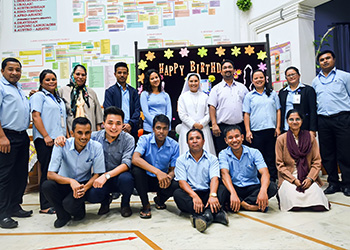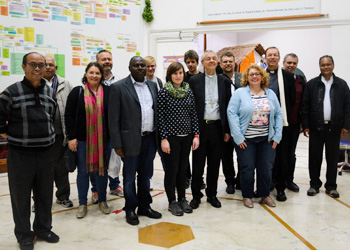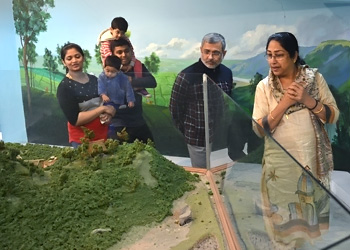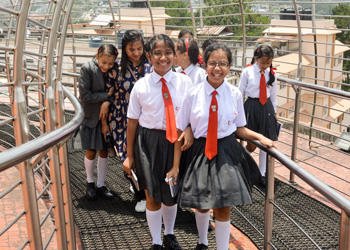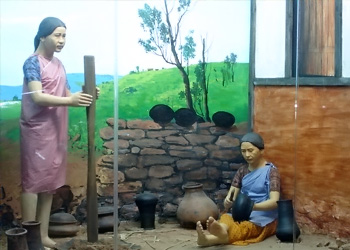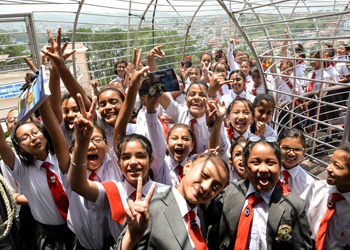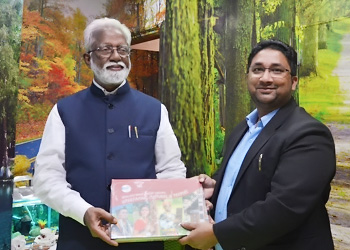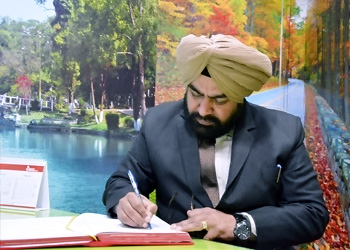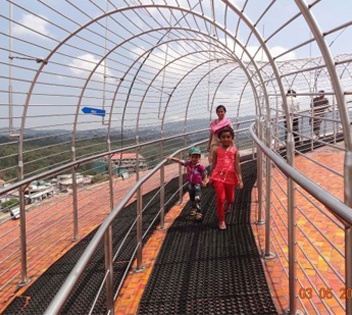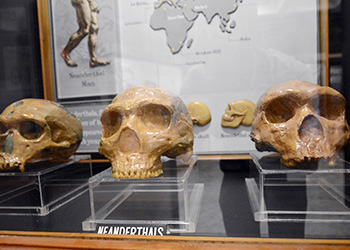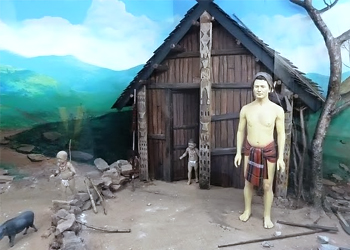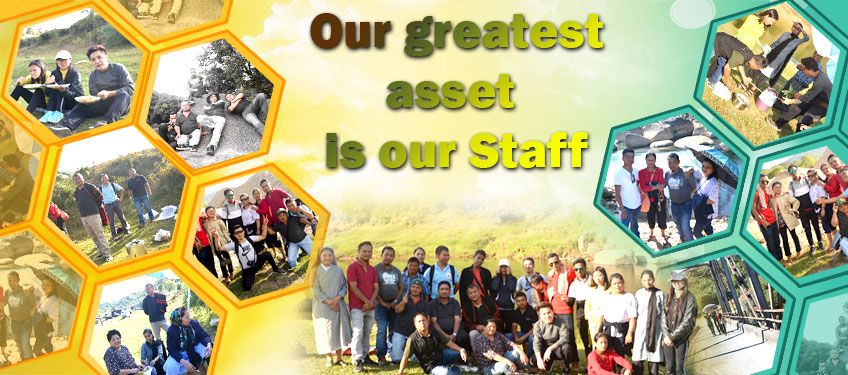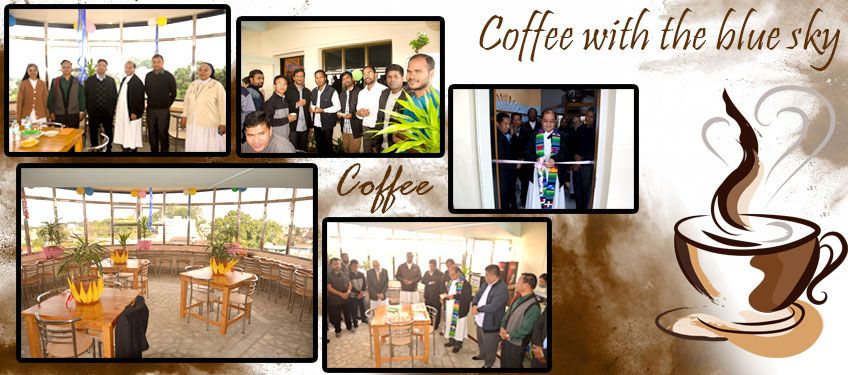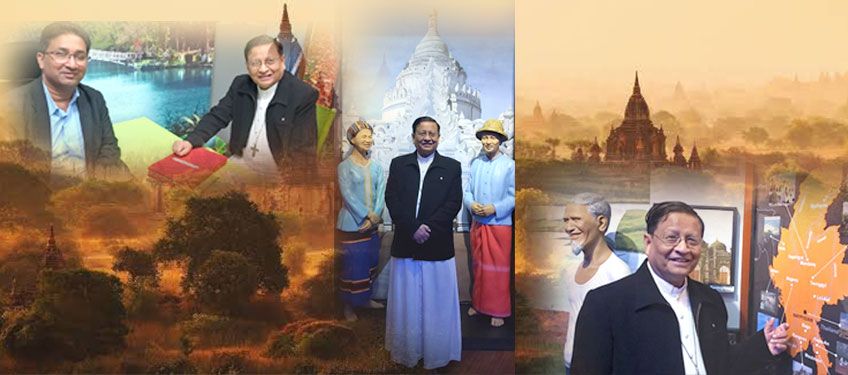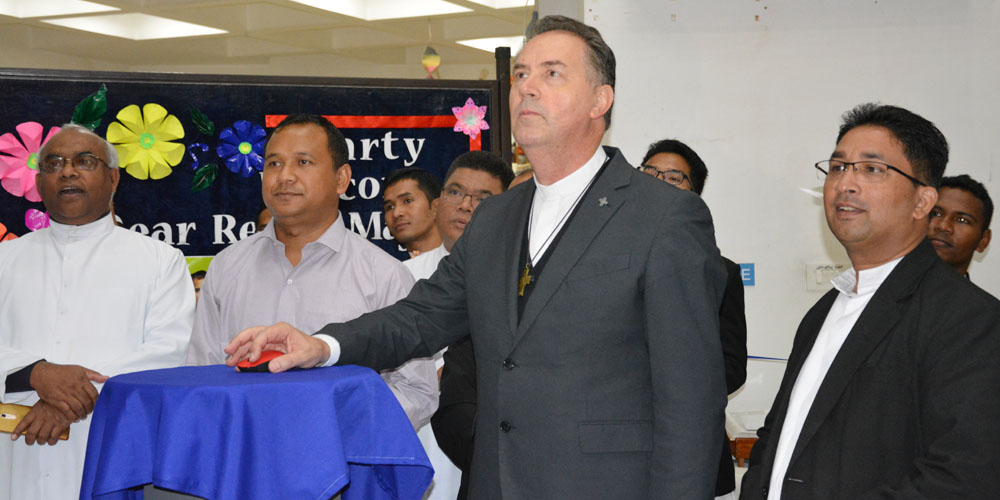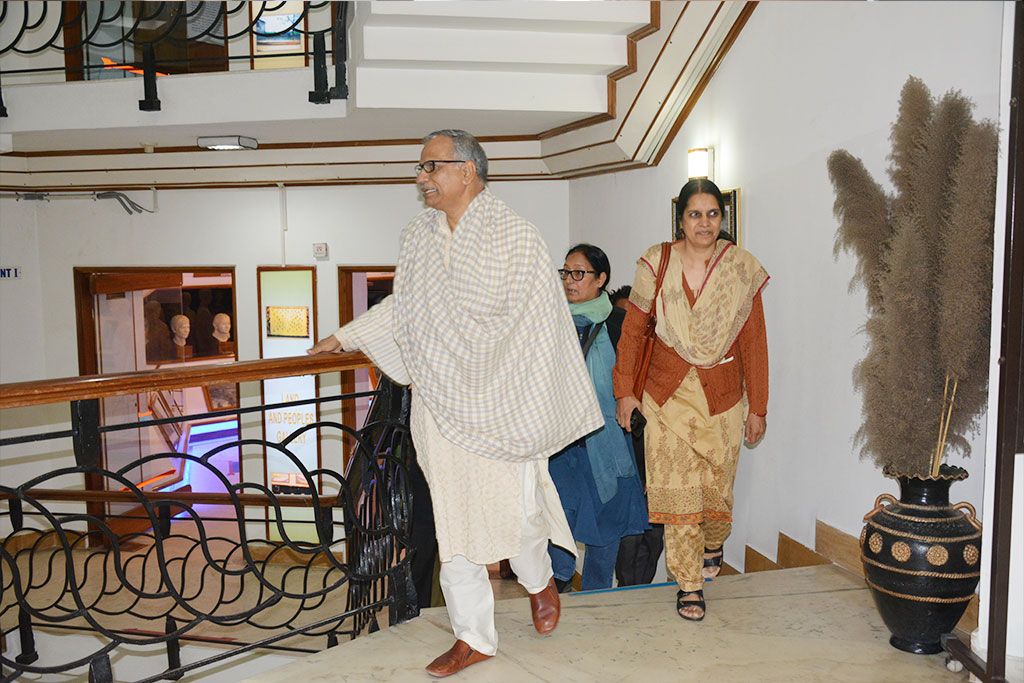CAVES OF MEGHALAYA
KREM MAWKHYRDOP / KREM MAWMLUH
Location: Khasi Hills
The main entrance of this famous cave is located at the bottom of the western flank of Lum Lawbah. The entrance is easily found by following the river behind the cement works of the Mawmluh Cherra Cements Limited, downstream for about 200 metres to a point where the river disappears underground.
The main sink entrance requires wading through water, which in the dry season turns into a deadly black quicksand from the effluents of the cements works. The best option to enter the cave would be through a high level bypass entrance which runs parallel to the main passage.
KREM DAM
Location: Khasi Hills
The impressive entrance of Krem Dam, measuring some 30 m across, lies at the foot of a large blind valley approximately 1 km to the east of Mawsynram village. A sizeable stream running down the valley enters the cave. The cave is formed in a coarse grained facies of limestone which almost looks like sandstone. The cave consists mainly of one very large river passage ending in a roof collapse where daylight can be seen. To the side of the main passage a complex maze of side passages and oxbows exist. The cave has no significant calcite formations.
KREM LYMPUT
Location: Khasi Hills
The cave lies about 6 km. from the village of Nongjri. The inconspicuous entrance hidden in the jungle covered boulders reveals itself by the cool air it blows. It is another beautiful and rather easy cave for any tourist.
From the small entrance hole, the main trunk passage runs for about 1 km with inclined walls and ceiling towards west into a passage known as ‘Way to Heaven,” which is a very loose and slippery climb. It leads into a series of spacious galleries which are very rich in calcite formations. Here, the great attraction is the Mughal Room (more than 25 m wide, 25 m high, and 75 m long). This cave is 6641m in length.
MAWSMAI CAVE
Location: Khasi Hills
6 kms from the Sohra market to the south lies the village of Mawsmai in the direction of Bangladesh border. At the village crossing, one passes grasslands surrounded by forests, ending in a clearing. From this clearing, a concrete pathway through the jungle leads up to the main cave entrance. This cave is the only cave that is fully lighted. The cave can be divided into two parts (old and new). Of the two, the new cave is yet to be lighted. It has impressive formations of large passages and chambers.
KREM MAWJYMBUIN
Location: Khasi Hills
Half a kilometre before reaching Mawsynram village, a metalled road on the left leads to a parking area by the cave. The entrance chamber of some 50 metres across and 4 metres high at its centre, has a large stalactite over a female stalagmite which gives an impression of a Shiva Lingam. This cave has now become a sacred shrine for Hindu believers.
A small stream flows under the left (east) wall of the chamber, around some large boulders before entering a side passage heading east which runs for about 40 m to end in a boulder collapse. A side passage leads to a second rift entrance, called Back Entrance which exits out through the rear. Another side passage at the rear of the chamber forms a series of small rift inlet passages that run north and then east for some 50 metres, before becoming too tight. The cave is formed in calcareous sandstone and is only 209 metres in height.
KREM LIAT PRAH
Location: Jaintia Hills
It is the longest natural cave in India. Liat Prah is one of approximately 150 known caves in the Shnongrim Ridge of the Jaintia Hills district in the state of Meghalaya, northeast India. Explored and surveyed as part of the ongoing Abode of the Clouds Expedition project, its current length of about 25 kilometers will likely be increased as nearby caves continue to be connected. Liat Prah’s dominant feature is its enormous trunk passage, the Aircraft Hangar.
SYNRANG-PAMIANG
Location: Jaintia Hills
The cave entrance is situated north of the track from Chiehruphi village, on NH 44, to Musianglamare. With 14,157 m of surveyed passage, it is currently India’s 3rd longest cave. The wet crawl entrance passage leads to about 500 m of very awkward boulder strewn passage which is followed by one of the world’s finest cave passages. This 7.63kmlong meandering stream-way (Wah Lariang), is probably one of the world’s longest single cave passage. The cave is very rich in formations coloured in orange, red, black, grey, blue, green and white.
‘Titanic Hall’ chamber would rank as one of the most beautifully decorated chambers anywhere in the world with ‘ thousands of large cave-pearls lying scattered on the floor. The cave has five entrances with the other four being Krem Musmari, Thloolong Cherlamet, Krem Eit Hati and Krem Khlieh Trai Lum.
KREM LUBON
Location: Jaintia Hills
In the Sutnga/Sakhain area (near N25°1708′; E92°2731), situated at the foot of a 30m high waterfall is a resurgence cave Krem Lubon, with an impressive rectangular entrance measuring 16 m wide and 8 m high. The cave entrance hidden behind the waterfall is reminiscent of the legendary ‘Phantom Cave’.
The large passage gradually deteriorates in size to pass high level breakdown chambers characterized by unstable boulders before it continues into a wet flat-out crawl. The cave is 687 m in length.
KREM CHYMPE
Location: Jaintia Hills
It is a resurgence cave, situated at a walking distance of about 3 km approximately north along the track from the village of Khaddum to Sielkan. It is a magnificent river cave which would require over 3.5 km of swimming over a series of very large and deep lakes, formed by the existence of more than 50 natural dams or gours, 6 to 8 m high. The cave has a very large colony of bats and possibly cave-adapted fish.
With 10.5 km of surveyed length it is currently India’s 5th longest cave. The cave has several leads yet to be explored. Sielkan Pouk which is at the upper reaches, acts as a sink to the cave system.
KOTSATI – UMLAWAN CAVE SYSTEM
Location: Jaintia Hills
The entrance of Krem Kotsati is located in the centre of Lumshnong village itself. It is used as a washing place by the villagers. One needs to swim to enter the cave. During the monsoons the entrance is submerged. Kotsati-Umlawan Cave system is a network of many caves like Krem Kotsati, Krem Umtyongai, Krem Umsynrang Liehwait, Krem Wahjajew. Krem Lalit, Synrang Thloo, Krem “Washing Place Inlet,” Krem Umshor, Put Lyer,Garage Pot, Thloolong Kharasniang and the thirteen other entrance of Krem Umlawan. With 24 entrances, both horizontal and vertical, no part of the cave is more than one hour away from the nearest entrance.
KREM UMKSEH
Location: Jaintia Hills
The beautiful cave entrance, used as a washing place by the local people, is situated behind the sawmill to the south of the Lumshnong Petrol Station. It is a splendid river cave with lots of formations, and mostly low but wide, wet and crawling size bedding plane passages.
Length :1268 m.
KREM SHRIEH (TANGNUB MONKEY CAVE)
Location: Jaintia Hills
The cave is accessible from the village of Tangnub and lies at the end of a fluted canyon. This excellent system begins with a massive vertical entrance shaft of 97 m deep which descends into a fine stream-way accompanied by a maze of high fossil passages. The cave measures 20 m by 40 m at the surface and opens to 60 m by 60 m at its base. The cave also has marvellous key-hole passages, coated with orange mud. It has just one entrance which requires prusiking on the way out. It is presently the deepest direct shaft known in India and with a surveyed length of 8862 m. It is currently India’s 5th longest cave.
KREM MAWSHUN
Location: Jaintia Hills
The cave lies about 680 m in a direct line east of the church at Lelad but 100 m lower. It is a dendritic master river cave that acts as a collector for several inlets and drains the area east of the village Lelad. The uninviting entrance, in between boulders, opens to a 5 m pot that drops into a fine, clean-washed stream passage, which again leads to a 24 m deep pitch. The stream passage gets larger, both upstream and downstream, with the downstream passage measuring 12 m by 10 m. The cave has several very well decorated high level passages.
It is a beautiful cave system of 3339 m in length.
KREM SYNDAI / KREM JOGINDRA
Location: Jaintia Hills
An obvious track down the slope from the village to a point where it steepens and immediately below this, a small path heads off through the forest to the left for some 50 m into a depression, where the cave entrance lies.
The cave entrance is of stooping height but once inside the passage immediately opens up into impressive proportions, of 25 m or more high and 30m wide. The cave contains some impressive calcite formations in the form of stalactites, stalagmites and a lot of flowstone, which are sadly blackened by the kerosene bamboo torches used by the local people. This prompted the British excursion (Brooks 1993b; Brooks & Smartl995) to nickname the cave as “Krem Sooty.” This cave is revered by Hindu saddhus, who come from as far as Nepal.
KREM UMTHLOO
Location: Jaintia Hills
The slope from Tongseng village leads to a sink which is free climbable and leads to a very unstable boulder blocking-, downward passage which eventually leads, to the dream of cavers, of big stream-way passages.
The cave system has numerous entrances of 50 or 60 m deep potholes like Krem Myrliat, Krem Moolale, etc. to a dendritic pattern of stream cave passage, which all resurges at Krem Ticha. It is a magnificent river cave with equally magnificent formations that would leave one spellbound.
KREM IAWE
Location: Jaintia Hills
The cave is situated on a spur protruding from the eastern flank of the Shnongrim-Tangnub Ridge into the upper reaches of the Litien valley.
The impressive daylight lit pothole entrance, measuring 10 by 15 m wide and 15 m deep, leads to a wet horizontal main passage which in turn leads to a very wet but incredible maze of intricate passages interspersed by orange coloured gours. This entrance pot hole could be avoided by entering through a free climbable slot in a sheltered nook below a leaning boulder at the edge of the pot-hole entrance. The cave hasa number of beautiful fossil passages. It is 3398m in length.
TETENGKOL BALWAKOL
Location: Garo Hills
Four kilometres north of Nengkhong village, are the two adjacent 1 m diameter circular entrances of Tetengkol Balwakol which lead to 5.7 km of dendritic river cave which also contains a maze of stooping to walking size passages. For such a small entrance it is really amazing to find behind it, a large and sizeable cave.
SIJU CAVE
Location: Garo Hills
132 kms from Tura, Siju is famous for Dobakkol or the bat cave with impressive stalagmites and stalagtites. It is one of the longest caves in the Indian Sub-continent and contains some of the finest river passages to be found anywhere in the world. There are magnificent limestone rock formations inside, especially named princes, Di’s chamber by the excavators will fill any visitor with awe.
DANGEDIKOL CHININGKRIKOL
Location: Garo Hills
The 18m wide and 12m high entrance leads to a largish meandering stream passage. The cave houses a large population of bats. With 1352m of surveyed length, the cave is still ongoing.
KOREKOL
Location: Garo Hills
A tunnel cave connecting a sink in the downstream end of valley in pinnacle karst to a resurgence at the rim of (the locally) shallow limestone outcrop below Matrongkol. An inspiring entrance (15m wide, 3.5m high) leads to a boulder collapse obstructed by driftwood but a squeeze to the top of a 2m climb down gains a dirty, shallow pool from where a north-south running passage (on average 7 m wide, 2.5 m high) continues below a daylight window (15m above) to enter a Y-junction. Here North South passage turns to the right, continuing all the way (185m, inclined by-7º) to the resurgence as a North-North East-South-South West passage. Some 50m from the Y-junction, the main drag splits into two parallel 20m-passages (the right/north-western one requires swimming but the left is dry). They unite at a cross-rift chamber, split again, and re-unite once more to continue from then onward as a level passage to a daylight-lit collapse area at the rim of the limestone outcrop.
PARKS OF MEGHALAYA
BALPAKRAM NATIONAL PARK
Location: South Garo Hills District
Balpakram National Park (“Land of Eternal Wind”) also known as the abode of perpetual winds. It is a national wild life park, about 167 kms from Tura. It is believed that here, the spirits of the dead dwell temporarily before embarking on the final journey. It is home to one of the rarest animals in the world – the Red Panda as it is commonly known.
ECO PARK
Location: East Khasi Hills District, Sohra
A large “Eco Park” established by the Meghalaya government in the plateau, which hosts several hybrid and indigenous orchids in the Green House donated by Shillong Agri-Horticultural Society. Also the Eco Park offers breathtaking view of distant Sylhet Plains of neighbouring Bangladesh.
IALONG PARK
Location: Jaintia Hills District
The Park is located about 8 kms from Jowai. It is known for its sacred grove and for its setting which overlooks the beautiful Pynthorwah Valley. Through the Special DRDA Tourism Project the District Administration have taken step to beautify the park by creating infrastructure such as water dams and canals, toilet facilities with changing rooms, hoardings, jungle clearance which has attracted tourist far and wide. A water eco park is also taking shape with an intention to change Ialong into a major Tourism Hub of the District.
IOOKSI (KUPLI) PARK
Location: Jaintia Hills District
Iooksi village in Laskein Block is located some 40 kms from the District headquarter. For the development of the park in the village the District administration through the Department of Forest (Social Forestry) have constructed an approach road to the park, ram shelters, railing in the view points, sitting benches and play items for children to attract visitors to the area.
KHARSATI PARK
Location: Ri Bhoi District
Karsati Nature Park (KNP) is a natural locale about 40 Kms from Shillong and 5 Kms from the National Highway. It was inaugurated on the 5th June 1998 as Kharsati Sanctuary for the preservation and conservation of the flora and fauna of the area, with the objective to have a better environment. The area, which covers approximately 570 acres of lushful forest land, has undulating hills with perennial streams running through it and abundant wildlife.
LADY HYDARI PARK
Location: East Khasi Hills District, Shillong
A well manicured garden with a mini-zoo and children’s playground attached to it-this park right in the heart of the city is now run and managed by the Forest Department. Close to this park lies the Crinoline falls and the city’s only swimming pool known by the same name i.e., Crinoline swimming pool.
MATTILANG PARK
Location: East Khasi Hills District, Upper Shillong
Mattilang Amusement Park is located in Upper Shillong. The park is formed by the Self Help Group of the area. This park is developed on the other side of the Elephants Falls and gives a good view of the Falls.
NEHRU PARK
Location: Ri Bhoi District
Lum Nehru Park is located adjacent to Orchid Lake Resort, at Umiam, about 15 km from Shillong, in Meghalaya. An ideal spot for holidaymakers, Lum Nehru Park is noted for its aviary, orchid-house and superbly maintained lawns.
NOKREK NATIONAL PARK
Location: West Garo Hills District
The Nokrek National Park and Biosphere Reserve is about 45 kms from Tura. Nokrek is the highest peak in Garo Hills and home to different species of wild animals including Elephants and Hoolock Gibbons. The park is also home to a very rare species of citrus-indica endemic to this place which the locals call memang narang (‘orange of the spirits’). Nokrek is also believed to be the home of Mande Burung (jungle man or ape man) and reported cases of sightings abound in and around the villages of Nokrek.
SA-I-MIKA PARK
Location: East Khasi Hills District, Sohra
Located on the way to the world famous ‘Dainthlen Falls’ and about 3 kms before reaching Sohra town is Sa -I – Mika Park, a one stop tourist destination. Set amidst 69 acres of pristine surroundings, Sa -I – Mika offers not only accommodation but a host of activities that is caters to people from all ages and walks of life. At present there are four double bedded rooms with all modern amenities and two traditional cottages. On offer are well appointed rooms, hot and cold running water, room service priced at Rs.1200/- and Rs.1500/- per night. There is also a 200 capacity conference hall which is suitable for hosting cooperate and departmental events, seminars, workshops and concerts. On request, the management can also arrange to organise barbecues, bonfires, tour guides, traditional Khasi dance and local cuisine and drink.
The park has the distinct advantage of being located close to the waterfalls and one can arrange treks and tours to these places, as well as the caves and other areas of tourist interest. Since the management is closely associated with the community, one can also opt for a homestay in one of the villages, to experience life with a typical Khasi family.
THANGKHARANG PARK
Location: East Khasi Hills District, Sohra
Managed and well maintained by the State Forest Department, this park on Mawsmai – Shella Road – about 8 kms from Sohra is a popular tourist spot. There are many rare and exotic orchids and some rare species of plants endemic to the area. A panoramic view of the plains of Bangladesh is clearly visible on a clear day from the park.
Thangkarang Park laid on the high rocky cliffs overlooks the plains of Bangladesh. You can spot the imposing Kynrem falls cascading down majestically in three stages. The bird sanctuary at nearby Thangkarang with the awesome view of the imposing waterfalls set against the backdrop of Bangladesh plains is a bonanza for tourists, both foreign and domestic.
THRILLS FUN PARK
Location: Ri Bhoi District
Thrills Fun Park is located at the Shillong-Guwahati Road, R-Bhoi District and is 25 kms from Shillong. It is 5 kms away down from the Umiam lake resort.
Thrills Fun Park is a place pack for a day or two for everyone who seeks fun, adventure and refreshes themselves from the hassle-bustle of daily life. A place for outing, picnic, fun and recreation for kids, youth and the elderly. It’s a place for those who love challenges and for those who just want to relax.
WATERFALLS PLACES OF MEGHALAYA
Several places in Meghalaya resonate with the sound of thundering waterfalls that cascade downhill slope, spraying its surroundings with a delicate mist of water. In and around Shillong there are numerous waterfalls – Bishop Falls, Elephant Falls, Spread Eagle Falls, Sweet Falls, Crinoline Falls and Beadon Falls are the best known.
In Sohra, the heavy rainfall has sculpted many natural rock formations and waterfalls. The cascading Nohsngithiang waterfalls at Mawsmai, the hauntingly beautiful Nohkalikai falls, and the Dain Thlen falls, where according to folklore, a man-eating monster called the Thlen was chopped into pieces. Natural rock carvings of the episode draw visitors to see the image of the Thlen, the symbol of greed, corruption and evil. The Jaintia Hills and the Garo Hills too have their share of beautiful waterfalls, notably the Tyrchi falls en route to Jowai and the Pelga falls near Tura in Garo Hills.
DAINTHLEN FALLS
Location: East Khasi Hills District, Sohra
Just before reaching Sohra, a road to the right, leads one to the falls which is 5 kms away. The waterfall derives its name from a Thlen or a snake of gigantic size which dwelt in a cave. Legend has it that the people destroyed the snake in order to rid themselves of its reign of terror. Adjacent to the very spot where the Thlen was slaughtered lies the Dain-thlen Waterfalls. Natural rock carvings of the episode draw visitors to see the image of the Thlen, the symbol of greed, corruption and evil.
NOHKALIKAI FALLS
Location: East Khasi Hills District, Sohra
A hauntingly beautiful waterfall, cascading down from the top of the gorge to the mystic deep green pool below, reminding one of the tragic legend associated with it, of a grief stricken mother who plunged to her death, unable to overcome her sorrow over the murder of her daughter by her husband.
KHOH RAMHAH
Location: East Khasi Hills District, Sohra
Also known as Motrop, is an imposing single rock formation in the shape of a giant cone. According to folklore, this was the fossilized cone shaped basket of an evil giant. It lies in close proximity to two other very similar rocks standing like a pair of giant sentinels. During the heavy monsoons, water flows between the two rocks and the cascading waterfall presents a breathtaking sight. The place attracts a lot of visitors throughout the year and is an idyllic picnic spot.
KYNREM FALLS
Location: East Khasi Hills District, Sohra
The highest waterfall in Meghalaya, it cascades down in three stages from the top of the hill and overlooks the Thangkharang Park.
NOHSNGITHIANG FALLS
Location: East Khasi Hills District, Sohra
Also known as Mawsmai falls, is 1 km south of Mawsmai village and derives its name due to the fact that the waterfalls are situated in a south westerly position and get illuminated by the sun from dawn to sunset. The vibrant colours of the setting sun on the waterfalls make it beautiful to behold.
ELEPHANT FALLS
Location: East Khasi Hills District, Upper Shillong
12 kms on the outskirts of Shillong, the mountain stream descends through two successive falls set in dells of fern-covered rocks.
SPREAD EAGLE FALLS
Location: East Khasi Hills District, Shillong
Located within the Shillong Cantonment, on the outskirts of the city, lies a sparkling waterfall which looks like an eagle with wings spread. Hence the name Spread Eagle Falls. The falls is locally known as Umkaliar or the falls into which Ka Liar slipped. A soothing setting amidst the calmness of nature – a treat to the eyes.
SWEET FALLS
Location: East Khasi Hills District, Shillong
Situated near Happy Valley at a distance of about eight kilometres from Shillong, it resembles a straight pencil of water emerging from a large size water pipe, as it drops vertically over a distance exceeding two hundred feet. Most suitable for a day’s outing and picnic, Explore it!
WEINIA FALLS
Location: West Khasi Hills District
Weinia Falls on the river Kynshi and quite near to the Thum falls is another scenic cascade. It is quite deep (depth not yet ascertained) and water vapour rising up from the bottom of the falls, in sunlight, form the colours of the rainbow. Both the sides of the falls is surrounded with rocks of different shapes, sizes and colours. Massive step-like structures formed by natural agencies are also seen on one side of the falls.
THUM FALLS
Location: West Khasi Hills District
On the same river Kynshi, is about 60 metres high and situated near Dilingim village offers a wonderful sight. At the base is a beautiful pool surrounded by hard rocks on three sides.
KRANG SURI
Location: Jaintia Hills District
Krang Suri is one of the most beautiful waterfalls in the District. It is located in the Amlarem Civil Sub Division. To transform the place into a tourists destination the District Administration has initiated steps to construct Chisseled and graveled footpaths and view points to enable visitors to better appreciate the beauty of the waterfall and its surroundings.
The footpaths are hewn from the natural multi colored stones available in the area, no cement has been used and stones have been placed symmetrically to enhance the aesthetic appeal of the area.
TYRSHI FALLS
Location: Jaintia Hills District
Tyrshi Falls on the Shillong-Jowai Road (NH 44) is Jowai’s answer to Shillong’s Elephant Falls. This fall is located about 5 kms from Jowai. A pretty arch bridge connects across an expanse of green paddy fields, which opens up to the gushing Tyrshi falls thundering down to the Pynthor (paddy-fields) below.
A winding footpath offering a breathtaking and panoramic view of the Pynthor Nein, eases your trek down to the bottom of the falls, which glides down like milk over a vertical drop.
THLUMUWI FALLS
Location: West Garo Hills District
Pelga falls located at the distance of 7 kms from Tura has become increasingly hot spot for anglers and picnickers in recent years. The tourism department developed this place by constructing a footpath and view point. A typical traditional Garo bamboo bridge constructed over Ganol river is another added attraction.
IMIL CHANG DARE
Location: West Garo Hills District
A waterfall of immense visual beauty is to be found close to the Tura-Chokpot Road in West Garo Hills district. The stream, on which it is located, flows through a deep, narrow winding bed of crevice rocks till it suddenly emerges on to a broad wide opening and cascades in a thick, wide formation, over a broad chasm, creating an electrifying waterfall of unique beauty. The deep, wide pool at the bottom of the fall with its wide and expansive surroundings make it an exciting swimming pool, full of fish of varied size and colour, besides being an ideal picnic spot.
RONG’BANG FALLS
Location: West Garo Hills District
Locally known as Rong’bang dare, this waterfall is situated 25 miles away from Tura on the Tura Williamnagar Road, a little beyong Rombagre village. It is a tributary of the Simsang River which can be seen from this road but the real beauty and magnitude of it can be experienced when one goes down to the place at the bottom of the waterfalls.
This Sprightly fall, though perennial, is at its best during the monsoon months. It presents motorists driving from Asanangre towards Williamnagar, a romantic visual of lasting satisfaction. Although the fall is located about crow-flight kilometres away from the highway, the width and depth of the falls are enough to make it clearly visible and a sheer delight. Clustered on either side by vast evergreen hills of bamboo’s which sway, leaving the viewer with memories of ecstatic joy.
WILDLIFE OF MEGHALAYA
NOKREK NATIONAL PARK
Location: West Garo Hills District
The Nokrek National Park and Biosphere Reserve is about 45 kms from Tura. Nokrek is the highest peak in Garo Hills and home to different species of wild animals including Elephants and Hoolock Gibbons. The Nokrek National Park has been established at Nokrek and it abounds in various wildlife including herds of wild elephants, rare varieties of birds and pheasants, beside rare orchids. The park is also home to a very rare species of citrus-indica endemic to this place which the locals call memang narang (‘orange of the spirits’). Nokrek is also believed to be the home of Mande Burung (jungle man or ape man) and reported cases of sightings abound in and around the villages of Nokrek.
SELBAGRE HOOLOCK GIBBON RESERVE
Location: West Garo Hills District
This small area protected by the community is home to the Hoolock Gibbons, the only ape species found in India. The sacred grove in the reserve is the pride of the village and the community. The Garos never kill or hunt the Hoolock Gibbon as it is a traditional belief among them that if a Hoolock Gibbon is killed, a famine or a curse would befall the entire village.
BALPAKRAM NATIONAL PARK
Location: South Garo Hills District
It is a national wild life park, about 167 kms from Tura. It is home to one of the rarest animals in the world – the Lesser Panda or the Red Panda as it is commonly known.
Balpakram (a place of perpetual winds) covering an area of about 220 sq km with a variety of wildlife including tigers, elephants, bison, black bear, leopards, sambar deer, situated near Baghmara in south Garo Hills district of Meghalaya. The western part of the park adjoins with Siju bird sanctuary along the banks of Simsang river.
BAGHMARA RESERVE FOREST
Location: South Garo Hills District
At a distance of about 4 kilometers from the main town of Baghmara, this thick forest is inhabited by langurs, birds of different species, elephants, etc. Many tourists have reported sighting herds of elephants as they travel from Baghmara to Balpakram National Park via Baghmara Reserve Forest.
SIJU BIRD SANCTUARY
Location: South Garo Hills District
Close by on the other side of Simsang River is the Siju bird sanctuary, a home for many rare and protected birds and other wildlife. The Siberian ducks also migrated here during the winter months. The lesser or Grey Hornbill is also seen around Siju. One interesting and rare bird is the Peacock Pheasant seen in Siju.
NONGKHYLLEM WILDLIFE SANCTUARY
Location: Ri Bhoi District
The Nongkhyllem Sanctuary near Nongpoh is also a good place for bird watching. The best time for bird watching is March/April during the nesting season.




